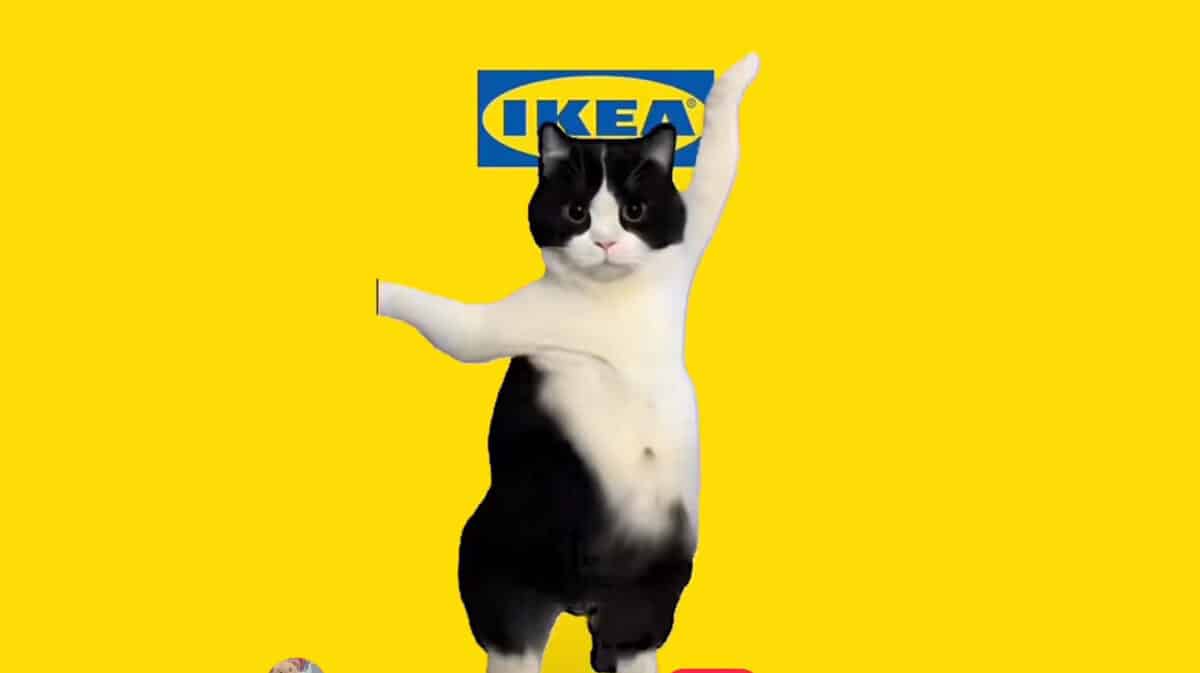China’s marketing landscape is becoming increasingly localized this year, striking a delicate balance between genuinely understanding GenZ and overdoing it.
Spend over 5 minutes on social media anywhere in the world, and you’ll see a funny video involving a cat (a “meme”). But in China, you’ll also see brands using such videos to grab attention Gen Z’s attention.
Meanwhile, cat meme content has shared the trend, “内耗不如发疯” (roughly translated as “It’s better to go crazy than to burn out internally”), which young people now prefer to embrace a “psychopathic” mental state. This shift reflects a broader trend of authenticity and emotional expression becoming more valued among young Chinese consumers.
How it all started…
The “cat videos” trend started in China around February 2024. A Japanese blogger published a cat “meme” describing his experiences in China. The videos got over 1.6 million views and gained over 200,000 followers in a week on Bilibili. Little Red Book followed quickly.
This start a craze of cat memes that grew exponentially month over month:

Soon enough, a “cat meme ecosystem” started to grow. Creators on Bilibili published guides and instructions helping users to create their own cat memes, growing the trend further.

It wasn’t long until brands tried to leverage the “cat memes” craze.
How brands jumped on the trend
Brands took notice of the cat meme trend and tried to benefit from it. At first, it was mostly used by small brands using an informal and relatable tone to gather attention.
The pattern was the following:
- The creator mentions working for a specific brand
- The creator introduces a workplace challenge assigned by their boss
- Describes the task as difficult or impossible
- Ask the audience for help by engaging with the post and following the account
Larger brands soon started to follow the trend. Here is one created by China’s largest logistics company SF Express, that gathered over 200,000 engagements. SF Express uses cat meme in a funny video to depict the excitement of a new employee’s first day at their Fortune 500 company, showcasing office highlights and innovative features.
Brands like L’Oréal, Biotherm, and Estée Lauder are promoting affordable products, such as primers and cleansers, using cat memes. They create scenarios where couples are giving these products as gifts, making the brand and its affordable products more relatable to young users.
Nestlé launched a new ice cream flavor with a video featuring a popular cat meme, garnering 34,000 engagements.
Brands start to build up emotional connect with Gen Z
The discussion of mental state has become increasingly popular on social media. The economic downturn and rising unemployment rate since COVID-19 have significantly pressured Gen Z. This has led to more exaggerated expressions of “going crazy”, with a trend towards celebrating an “unconventional mental state.”
And on Xiaohongshu, the posts related to mental state (精神状态) continuously gained over 48 million engagements in April 2024.

The viral game “Electronic Muyu” has captured the attention of young people. The game features a virtual version of the traditional “muyu,” a wooden percussion instrument used by monks during meditation and chanting. Each tap on the screen mimics the rhythmic knocking of the muyu, displaying a “-1 worry” message. This simple yet engaging activity has become a trend among office workers and students alike, providing a playful outlet for stress relief and anxiety management.
Although it may seem like an absurd action, this phenomenon precisely highlights the mental state of young people today: overwhelmed by social pressure and striving to avoid trouble by all means.
More brands are striving to emotionally connect with the younger generation. IKEA exemplifies this approach by fostering a strong bond with the youth community through humor-infused branding. They strategically place iconic dolls in unexpected locations to spark social conversations and enhance the store experience. A notable example is a plush toy pig lying on a grill with eggs beside it, creating a whimsical and humorous display that resonates with young shoppers.

Additionally, IKEA’s slogan, “Choose ‘good night’ and forget night shifts and late marriage,” directly addresses the pressures young people face regarding work-life balance and societal expectations about marriage. This approach makes the audience feel supported by the brand. IKEA’s ability to combine humor with a deep understanding of young people’s challenges sets them apart in creating meaningful connections.
Speed is crucial
In the first 30 days, over 50 brands engaged with young people using cat memes on their official accounts. The first ones that followed got a lot more reaction from the market.
Nestlé first cat meme ice-cream launch video received over 34,000 engagements in April, but a second video using a similar theme garnered less than 200 engagements in May. This 30-days gap highlights the significant impact of timing.
While a well-crafted story that incorporates brand features is important, the speed at which audiences switch their attention is the make-or-break factor.
In Conclusion
Understanding and engaging with Gen Z in China requires brands to be authentic, culturally savvy, and emotionally resonant. The use of cat memes and mental health themes demonstrates how brands can effectively connect with young consumers by tapping into popular trends and creating relatable content.
However, it’s not just about applying a trending meme template and following the hottest discussion; it’s about building deeper connections with users. By staying attuned to the evolving preferences and mental states of young consumers, and by incorporating their feedback, brands can create impactful and memorable campaigns.

